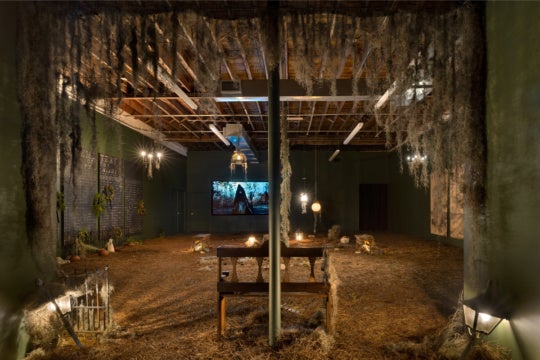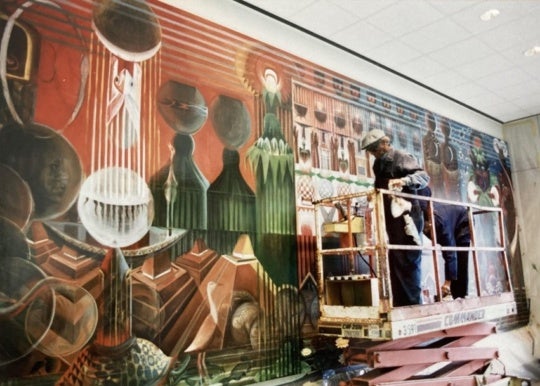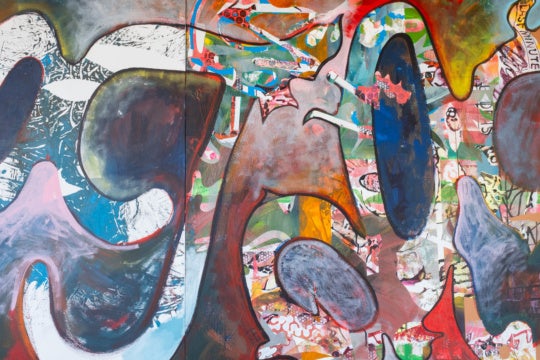
Photographer Sebastião Salgado cares deeply about people, a quality that has led Salgado to document some of the most extreme horrors of human experience—war, poverty, greed, famine, genocide, and disasters. A new documentary by German filmmaker Wim Wenders, aptly titled The Salt of the Earth, takes Salgado as its subject, and his deep concern for humanity (a far rarer quality than one might imagine) that infuses his compelling photographs. His series Other Americas, Workers, Migrations, Sahel, Africa, and Genesis are among his major projects considered in this film, which opens tomorrow, April 17, at the Tara Cinema for a one-week run.
The film’s strongest scenes are essentially slide shows, with Salgado speaking about his photographs and the circumstances under which they were taken. The most telling scene has him detailing his nightmarish images of the Brazilian gold mines of Serra Pelada. Salgado describes the photos as a bleak metaphor for the brutal history of human life on earth.
There are some lovely self-reflexive touches on Wenders’s part that capture the inherent challenges of a documentarian documenting a documentarian: in one scene, Wenders is attempting to take footage of Salgado photographing a river in Brazil when Salgado turns to the camera and takes pictures of Wenders and his crew, spoiling the director’s plan for a naturalistic, cinema verité scene. Salgado even boasts about the fantastic images of Wenders that he’s captured, which are, in fact, truly extraordinary, probably the best pictures of Wenders that anyone has ever taken or ever will.

The film gives us Salgado’s fascinating biography and an attempt to reveal what motivates his work, yet we never quite arrive at a satisfactory answer as to why he dove again and again into the most isolated, bleak, and violent human circumstances—perhaps that complete picture simply isn’t possible. Salgado studied economics and began a career as an economist, and Wenders incisively frames much of the photographer and his work in that context. Salgado comes to the world with an economist’s understanding of global economies, of where the trouble is, of what the illusions are and what the reality is, and of who the advantaged and disadvantaged are in the world.
Wenders often moves forward with the assumption that documenting the world’s horrors through photographs is an unmitigated, unquestioned good; I would argue that it’s a good that’s possibly mitigated and questionable, and this possibility doesn’t get a thorough enough examination in the film.

Beginning in the late ’80s and continuing through the ’90s, Salgado photographed some of the most terrible, bloody, and disastrous events of our age: genocides in Rwanda and Yugoslavia, wars, famine, and large-scale environmental disasters like the burning of the oil fields in Kuwait. He ends up understandably pessimistic about humanity and its prospects, but the film ends on an unexpectedly positive note. Salgado more or less retires to his family’s farm in Brazil, an ugly dried-out, drought-ridden, thoroughly unusable piece of once lush land, itself clearly another victim of global climate change. His wife has the idea to replant the land with native trees, and the surprise for all of them is how quickly the ecosystem begins to heal; we end in the present, with walks through the beautiful, peaceful, lush new forest on his farm.
As Wenders points out at the film’s opening, a photographer is always by nature someone who writes with both light and shadow. Against the odds, Salgado’s message is, ultimately, a hopeful one: his work tells us how badly we’re fucking up, but how quickly we could make things right again.
Andrew Alexander is an Atlanta-based critic who covers visual art, dance, and theater.




